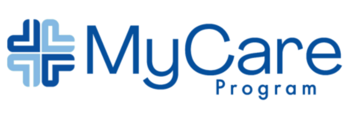Brief Overview: Nephrolithiasis refers to stones within the kidneys. Stones can occur anywhere in the urinary tract including ureters and bladder. The majority of urinary tract stones originate in the kidneys.
Prevalence: 10-15% in the US, a major source of medical costs. Males are 2-3x more affected than females. Highest prevalence in Caucasians.
Etiology: Some genetic factors in cases of cystinuria, and renal tubular acidosis. Calcium oxalate stones are the most common, followed by uric acid, struvite, calcium phosphate, and cystine. Urine supersaturation of certain crystal types, pH-dependent based on each type of stones. See below for more info.
Risk Factors:
- Calcium Oxalate: dietary excess of oxalates, hyperparathyroidism, inappropriate loss of calcium in urine, excessive intestinal absorption, inadequate stone inhibitors in urine.
- Uric Acid: Purine excess, gout, chronic dehydration, ingestion of uricosuric drugs (medications that promote urinary excretion of uric acid in patients that have gout).
- Struvite: Less common, UTIs with urease splitting organisms that causes urine alkalinization and crystals of magnesium ammonium phosphate to form(proteus, klebsiella)
- Cystine: An inherited disorder of renal tubular absorption of cysteine
- Stone-Provoking Drugs: vitamin D, antacids, furosemide, uricosurics, triamterene, topamax.
Commonly Associated Conditions: congenital malformations of urinary tract due to stasis/impaired drainage of urine, Crohn disease, dehydration, gout, inflammatory bowel disease, intestinal bypass, medullary sponge kidney, renal tubular acidosis
Common Symptoms/Pertinent History: history of kidney stones (50% chance of recurrent stone formation after 1st stone), family history of urolithiasis. Gross hematuria, acute onset severe flank/abdominal pain with obstructing stones. Recurrent UTIs (stones can be a nidus for infection).
Physical Findings: CVA tenderness, deep tenderness within flank radiating to groin with obstructing stones, fever present w/ infection.
Common Labs, Imaging, and Tests:
- UA may show microscopic hematuria, pyuria may indicate concomitant UTI, CBC- elevated WBC may be secondary to inflammation or indicative of infection, CMP- monitor renal function, may have acute renal failure if a bilateral obstruction, calcium level, PTH, 24-hour urine collection for evaluation of supersaturations of various urine components/volume(calcium, creatinine, oxalate, citrate, sodium, phosphate, magnesium, pH, uric acid). Stone analysis for composition.
- Noncontrast CT abd/pel- 1st line for acute renal colic, highest accuracy, can determine size/location stones and any resulting hydronephrosis. Ultrasound- noninvasive, 1st line in high-risk patients such as children, and pregnancy. KUB if radiopaque stones.
- General- high fluid intake daily, recommended daily urine output goal of 2-2.5 liters daily. Low sodium, low oxalate diets. Restricted animal protein. Avoid excessive calcium intake, but normal dietary intake of calcium is actually encouraged.
- Metabolic workup if recurrent stone formation.
- Recommendations for treatments depend on the size and location of the stones. If small and likely passable size, may monitor with routine imaging and ongoing prevention measures. Stones 4-5mm have 50% chance of passing spontaneously with medical expulsive therapy. Larger stones that have a smaller likelihood of passing may qualify for elective/proactive stone management with surgery as listed below. Again, the surgery recommendation will be based on stone burden and location. Stone burden >2cm and staghorn calculi most likely will require PCNL.
- Medical expulsive therapy for acute ureteral stones- tamsulosin (0.4mg daily, relaxes musculature of the ureter and lower urinary tract), hydration, pain management, anti-emetics
- Extracorporeal shockwave lithotripsy- ESWL- Renal stones only. Discouraged in stones >1cm. Obesity/large body habitus interferes with stone visibility and ability to target stone, therefore relative contraindication.
- Ureteroscopy- renal or ureteral stones, requires ureteral stent short term after surgery, will have ongoing flank pain, irritative voiding symptoms, nausea, etc. while stent in place. Standard risks of surgery including bleeding, infection, and ureteral stricture.
- PCNL- surgery approach for stone removal through incision in posterior flank.
- Tailored to reverse contributing metabolic abnormality
- Hypercalciuria- thiazide diuretic (25-50mg bid), potassium citrate(20meq bid, monitor serum K levels), reduce dietary oxalates, and sodium intake (less than 2,000mg/d)
- Hyperuricosuria- increase fluid intake, reduce dietary purine (red meat), K citrate to keep pH between 6.5-7, reduce uric acid production with allopurinol (300mg/d)
- The presence of pyuria, fever, leukocytosis, or bacteriuria suggests the possibility of UTI and potential of infected and obstructed kidney- high risk of sepsis and potentially life-threatening, should be treated as a surgical emergency.
- Progressive renal damage with untreated obstructing stones.
- Untreated stones/ongoing stone formation may result in a large stone burden that requires more invasive surgical intervention such as Percutaneous nephrolithotomy listed above.
- PREVENTION IS KEY!
- Hydration, goal of 2.5 liters of urine output daily. Followed by low oxalate intake, reduce sodium in the diet, limited animal proteins, and avoid excessive calcium intake.
- Good management of metabolic and endocrine comorbidities-bowel disorders, hyper/hypoparathyroidism, diabetes.
- Has your doctor given you dietary recommendations that we can review?
- Are you compliant with hydration and recommended diets?
- Do you have recurrent UTIs?
- Do you have GH/flank pain?
- Have you completed lab/diagnostic f/u as ordered by your provider? Imaging, labs, 24hr urine, etc.
- Do you know the warning signs to notify your provider immediately and/or seek emergency care? Fever, intractable pain and/or n/v, decreased urine output.
- Tips for getting adequate water intake
**See food chart for Low/high oxalate foods**
